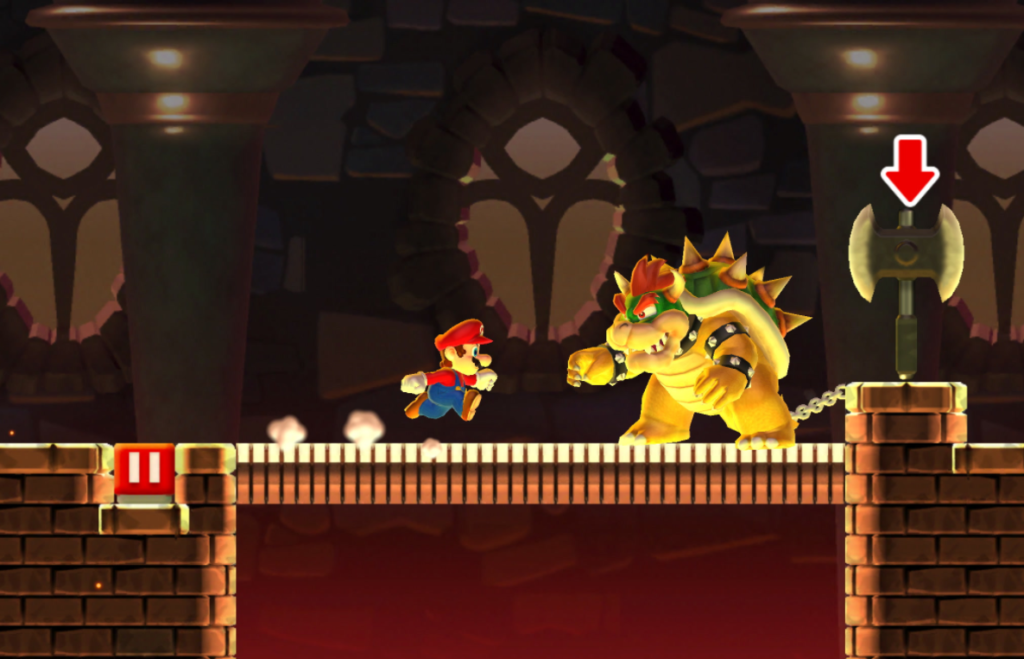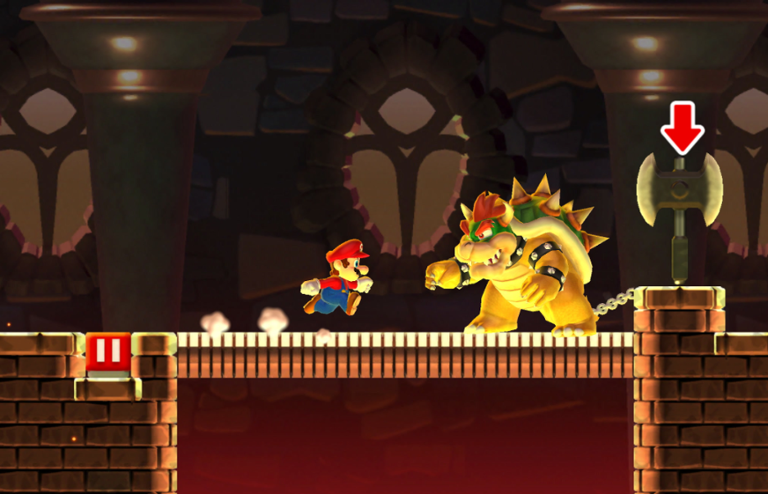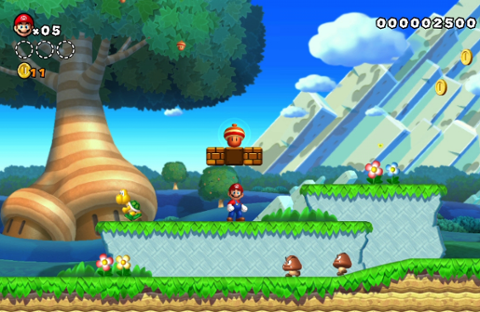 As part of its latest quarterly earnings reveal, Nintendo announced its intention to release two or three mobile games every year. Considering the company’s recent success with “Super Mario Run” (screenshot above) and “Pokémon Go” on smartphones, that sort of decision seems like a no-brainer. “Super Mario Run” has earned $53 million since its December 15 release on iOS, although only a small fraction of the people who downloaded it paid $10 to unlock the full game. “Pokémon Go,” an augmented-reality title built on the “freemium” model, likewise managed to rack up millions of dollars as players paid to download various add-ons. If Nintendo releases multiple games per year for smartphones, and those games generate a double-digit conversion rate in terms of paying customers, it might eventually earn billions of dollars from its decision to embrace iOS and Android. In doing so, it would follow a model established by King, Supercell, and other gaming firms that have made that sort of money off a handful of franchise games for smartphones. However, Nintendo will face the same challenges that have bedeviled other smartphone-game makers over the past few years. As “Pokémon Go” demonstrated last year, even the biggest blockbuster games inevitably face the moment when usage and revenues begin to decline from their stratospheric peaks; in 2016, app-usage analyst firm App Annie reported that the average time to maturity for new games was just over 17 weeks. While introducing new features, characters, and gameplay can slow that usage erosion, mobile gaming remains an especially tough arena, even for the smartest and fiercest of competitors. Just ask Zynga, which went from a social- and mobile-gaming juggernaut to a company struggling to adapt to a rapidly evolving market. Nintendo does have two decided advantages: its console gaming, which continues to draw buzz and revenue apart from its mobile effort, and its huge intellectual-property portfolio, which includes some of the most-loved games of the 20th century. If Nintendo releases an iOS game based off “Mega Man” or “Kid Icarus,” for example, it can expect to draw in millions of adults who have fond memories of playing those games as kids, in addition to the millions of adolescents who will download the title because of the Nintendo brand. By releasing two or three games a year, Nintendo can take advantage of the mobile market without eclipsing its work in consoles. This is particularly important as its latest gaming system, the Switch, will arrive in March, and Nintendo needs the hardware to sell well if it wants to continue to hold its own against Microsoft’s Xbox and Sony’s PlayStation.
As part of its latest quarterly earnings reveal, Nintendo announced its intention to release two or three mobile games every year. Considering the company’s recent success with “Super Mario Run” (screenshot above) and “Pokémon Go” on smartphones, that sort of decision seems like a no-brainer. “Super Mario Run” has earned $53 million since its December 15 release on iOS, although only a small fraction of the people who downloaded it paid $10 to unlock the full game. “Pokémon Go,” an augmented-reality title built on the “freemium” model, likewise managed to rack up millions of dollars as players paid to download various add-ons. If Nintendo releases multiple games per year for smartphones, and those games generate a double-digit conversion rate in terms of paying customers, it might eventually earn billions of dollars from its decision to embrace iOS and Android. In doing so, it would follow a model established by King, Supercell, and other gaming firms that have made that sort of money off a handful of franchise games for smartphones. However, Nintendo will face the same challenges that have bedeviled other smartphone-game makers over the past few years. As “Pokémon Go” demonstrated last year, even the biggest blockbuster games inevitably face the moment when usage and revenues begin to decline from their stratospheric peaks; in 2016, app-usage analyst firm App Annie reported that the average time to maturity for new games was just over 17 weeks. While introducing new features, characters, and gameplay can slow that usage erosion, mobile gaming remains an especially tough arena, even for the smartest and fiercest of competitors. Just ask Zynga, which went from a social- and mobile-gaming juggernaut to a company struggling to adapt to a rapidly evolving market. Nintendo does have two decided advantages: its console gaming, which continues to draw buzz and revenue apart from its mobile effort, and its huge intellectual-property portfolio, which includes some of the most-loved games of the 20th century. If Nintendo releases an iOS game based off “Mega Man” or “Kid Icarus,” for example, it can expect to draw in millions of adults who have fond memories of playing those games as kids, in addition to the millions of adolescents who will download the title because of the Nintendo brand. By releasing two or three games a year, Nintendo can take advantage of the mobile market without eclipsing its work in consoles. This is particularly important as its latest gaming system, the Switch, will arrive in March, and Nintendo needs the hardware to sell well if it wants to continue to hold its own against Microsoft’s Xbox and Sony’s PlayStation. Nintendo Plans More Smartphone Games
 As part of its latest quarterly earnings reveal, Nintendo announced its intention to release two or three mobile games every year. Considering the company’s recent success with “Super Mario Run” (screenshot above) and “Pokémon Go” on smartphones, that sort of decision seems like a no-brainer. “Super Mario Run” has earned $53 million since its December 15 release on iOS, although only a small fraction of the people who downloaded it paid $10 to unlock the full game. “Pokémon Go,” an augmented-reality title built on the “freemium” model, likewise managed to rack up millions of dollars as players paid to download various add-ons. If Nintendo releases multiple games per year for smartphones, and those games generate a double-digit conversion rate in terms of paying customers, it might eventually earn billions of dollars from its decision to embrace iOS and Android. In doing so, it would follow a model established by King, Supercell, and other gaming firms that have made that sort of money off a handful of franchise games for smartphones. However, Nintendo will face the same challenges that have bedeviled other smartphone-game makers over the past few years. As “Pokémon Go” demonstrated last year, even the biggest blockbuster games inevitably face the moment when usage and revenues begin to decline from their stratospheric peaks; in 2016, app-usage analyst firm App Annie reported that the average time to maturity for new games was just over 17 weeks. While introducing new features, characters, and gameplay can slow that usage erosion, mobile gaming remains an especially tough arena, even for the smartest and fiercest of competitors. Just ask Zynga, which went from a social- and mobile-gaming juggernaut to a company struggling to adapt to a rapidly evolving market. Nintendo does have two decided advantages: its console gaming, which continues to draw buzz and revenue apart from its mobile effort, and its huge intellectual-property portfolio, which includes some of the most-loved games of the 20th century. If Nintendo releases an iOS game based off “Mega Man” or “Kid Icarus,” for example, it can expect to draw in millions of adults who have fond memories of playing those games as kids, in addition to the millions of adolescents who will download the title because of the Nintendo brand. By releasing two or three games a year, Nintendo can take advantage of the mobile market without eclipsing its work in consoles. This is particularly important as its latest gaming system, the Switch, will arrive in March, and Nintendo needs the hardware to sell well if it wants to continue to hold its own against Microsoft’s Xbox and Sony’s PlayStation.
As part of its latest quarterly earnings reveal, Nintendo announced its intention to release two or three mobile games every year. Considering the company’s recent success with “Super Mario Run” (screenshot above) and “Pokémon Go” on smartphones, that sort of decision seems like a no-brainer. “Super Mario Run” has earned $53 million since its December 15 release on iOS, although only a small fraction of the people who downloaded it paid $10 to unlock the full game. “Pokémon Go,” an augmented-reality title built on the “freemium” model, likewise managed to rack up millions of dollars as players paid to download various add-ons. If Nintendo releases multiple games per year for smartphones, and those games generate a double-digit conversion rate in terms of paying customers, it might eventually earn billions of dollars from its decision to embrace iOS and Android. In doing so, it would follow a model established by King, Supercell, and other gaming firms that have made that sort of money off a handful of franchise games for smartphones. However, Nintendo will face the same challenges that have bedeviled other smartphone-game makers over the past few years. As “Pokémon Go” demonstrated last year, even the biggest blockbuster games inevitably face the moment when usage and revenues begin to decline from their stratospheric peaks; in 2016, app-usage analyst firm App Annie reported that the average time to maturity for new games was just over 17 weeks. While introducing new features, characters, and gameplay can slow that usage erosion, mobile gaming remains an especially tough arena, even for the smartest and fiercest of competitors. Just ask Zynga, which went from a social- and mobile-gaming juggernaut to a company struggling to adapt to a rapidly evolving market. Nintendo does have two decided advantages: its console gaming, which continues to draw buzz and revenue apart from its mobile effort, and its huge intellectual-property portfolio, which includes some of the most-loved games of the 20th century. If Nintendo releases an iOS game based off “Mega Man” or “Kid Icarus,” for example, it can expect to draw in millions of adults who have fond memories of playing those games as kids, in addition to the millions of adolescents who will download the title because of the Nintendo brand. By releasing two or three games a year, Nintendo can take advantage of the mobile market without eclipsing its work in consoles. This is particularly important as its latest gaming system, the Switch, will arrive in March, and Nintendo needs the hardware to sell well if it wants to continue to hold its own against Microsoft’s Xbox and Sony’s PlayStation. 
